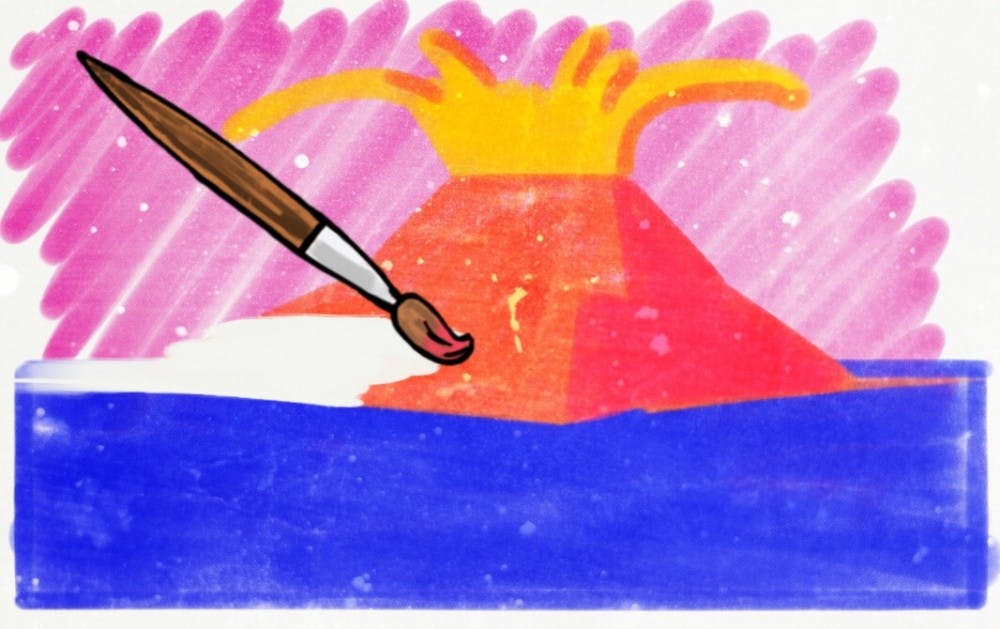ASU's School of Earth and Space Exploration and School of Film, Dance and Theatre are collaborating to offer a new course that combines art and science to create a informative and artistic presentation.
The class, Volcanic Arts & Sciences, is an example of combining science and art to make science more palatable to the average person and art more informative.
Lance Gharavi, an assistant director for the School of Film, Dance and Theatre, is one of two professors teaching the course.
“The course is a hands-on, project based course that brings together creative arts and Earth science, specifically the science of volcanoes and related dynamics of the Earth’s interior," Gharavi said. "The project is to collaborate on creating a public arts event presenting artwork ... that addresses or somehow engages volcanoes and the related dynamic.”
Gharavi’s counterpart, Edward Garnero, a professor in the School of Earth and Space Exploration, described the class as bringing art, engineering and science students into a classroom to collaborate with one another to create a multidimensional project.
"Whether it is narrative, story, skit or 3D media like a 3D Earth rotating (or) showing 2,000 years of volcanoes while giving pitch, sound and rotation (and) utilizing the 5.1 Dolby stereo; we want to immerse people," Garnero said.
Garnero said the course offers students a unique, hands-on experience.
“We are urging students to develop and pose their own questions and pursue answers to those questions,” Gharavi said. “The students are becoming themselves investigators into the science of the Earth’s interior and looking for ways to fuse their curiosity and their inquiry to their artistic and creative capacity.”
This is not the first time that Gharavi and Garnero have collaborated on such a project.
Over a year ago, they produced “Beneath: A Journey Within,” a show exploring the mysteries of what lies beneath the surface of the Earth in the Marston Exploration Theater.
“Art can function as a mode of communication,” Gharavi said. “I specialize in several ways of communicating with audiences in ways that scientists aren’t used to engaging.”
While art can be used to facilitate understanding of complex scientific theories to the average person, art can also help scientists to visualize their own data in a way that may help them advance their work, according to Garnero.
"The 3D, spatial, temporal nature of matter is something that some people are better at understanding than others, and it is something that is very important in science, especially things that have to do with space-time and the physical sciences," he said.
This class isn’t the only place that the School of Earth and Space Exploration is merging science and the arts; their undergraduate program, Psyche Inspired, was created to encourage students of all disciplines to create art surrounding the NASA Psyche Mission.
The Psyche Mission, which is led by ASU and is targeted to launch in the summer of 2022, aims to orbit, study and map the asteroid of the same name.
Brooke Owen, a junior majoring in biological sciences and student manager of Psyche Inspired, said the program’s goal is to engage the public in a way that is interesting to them whether they are interested in science or not.
During the 2017-2018 school year, students selected for the program produced over 50 pieces of art.
In the same way that Gharavi and Garnero use art to make complicated scientific topics more approachable and enjoyable, Psyche Inspired uses it to promote the Psyche Mission and create a sense of awe and excitement in its viewers.
“I think that art is very personal,” Owen said. “It helps people to see themselves in whatever they are trying to explain. A certain artistic concept can help people to understand something that is very complicated and make it more personal.”
Reach the reporter at jmwillma@asu.edu or follow @JacobWillman3 on Twitter.
Like The State Press on Facebook and follow @statepress on Twitter.




